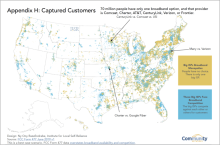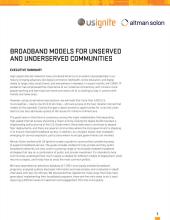How Cities Can Close Digital Divides During Covid — If State Law Doesn’t Stand in the Way
With the end of the federal Keep Americans Connected pledge and the failure of Congress to pass comprehensive broadband aid, it’s clearer than ever before that local governments are the last line of defense against the digital divide, which has been exacerbated by the ongoing pandemic.
Some communities have already taken steps to connect their residents, during the global health crisis and beyond. For example, the public school systems in San Francisco and Portland, Oregon, decided to cover the cost of broadband subscriptions for low-income students. In Chattanooga, Tennessee, the city’s municipal broadband network is partnering with local schools to provide free Internet access to all students that receive free and reduced-price lunch.
However, in 21 states, legal barriers — often enacted at the behest of corporate telecom lobbyists — prevent local governments from investing in community broadband solutions to close the digital divide.
To help local governments that want to improve connectivity navigate the various opportunities and obstacles, we at the Community Broadband Networks initiative at the Institute for Local Self-Reliance (ILSR) have teamed up with the Local Solutions Support Center (LSSC) to produce a number of helpful resources. We previously shared a step-by-step guide for establishing local broadband authority during the pandemic. Now, local officials and community advocates can access two more resources: a guide for local governments to act in the context of the pandemic, and an interactive state broadband preemption map.



